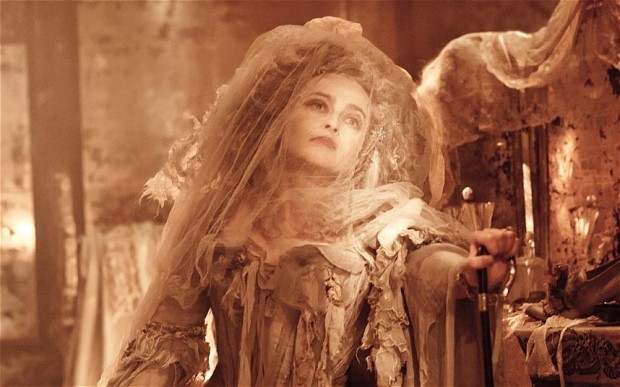What Is A Flat Character? This is a common question among writers, and WHAT.EDU.VN is here to provide a clear and concise answer. A flat character lacks complexity and doesn’t undergo significant change. If you want to improve your character development skills, learn how to identify and transform one-dimensional characters into well-rounded, engaging figures. Discover character archetypes and character traits to enrich your storytelling.
1. Understanding Flat Characters: The Basics
A flat character is defined by their lack of emotional depth, limited personal goals, and unchanging personality. They are often simplistic, predictable, and serve primarily as plot devices rather than fully realized individuals. Understanding this concept is crucial for crafting compelling narratives.
- Absence of Internal Conflict: Flat characters typically don’t grapple with inner turmoil or moral dilemmas.
- Stereotypical Representation: They often embody common stereotypes, lacking unique or nuanced traits.
- Static Nature: They don’t evolve or learn from their experiences throughout the story.
- Limited Personality: Their personalities are often shallow and lacking in complexity.
In contrast, a round character possesses:
- Internal Struggles: They face personal challenges and internal conflicts.
- Significant Development: They undergo noticeable changes and growth.
- Emotional Range: They display a wide range of emotions and reactions.
- Multi-faceted Personality: They have complex and nuanced personalities.
2. Flat vs. Static Characters: Key Differences
It’s important not to confuse flat characters with static characters. While both may seem similar, there’s a crucial distinction:
| Feature | Flat Character | Static Character |
|---|---|---|
| Definition | Lacks complexity and depth. | Remains unchanged throughout the story. |
| Focus | Character’s complexity. | Amount of change the character undergoes. |
| Relationship | All flat characters are static. | Not all static characters are flat. |
| Example | A purely evil villain with no redeeming qualities. | A wise mentor who provides consistent guidance. |



A static character remains the same throughout the story, but they can still possess depth and complexity. A flat character, on the other hand, lacks depth regardless of whether they change.
3. Are Flat Characters Always a Problem?
While ideally your main characters should be well-rounded, flat characters can serve a purpose in your story. They can populate the world, move the plot forward, or provide comic relief. The key is to ensure your main characters have depth and complexity to keep the audience engaged.
Charles Dickens utilized flat characters effectively, creating memorable caricatures that enhanced his stories.
They are useful when:
- Plot-Driven Stories: In genres like thrillers or detective novels, flat characters can keep the focus on the central plot.
- Simple Narratives: In stories for children, complex characters may be unnecessary.
- Minor Roles: Flat characters can support the protagonist’s journey without requiring extensive development.
4. Strategies to Transform Flat Characters
Discovering you have a flat character isn’t a writing death sentence. Here are proven methods to add depth and complexity:
4.1 Develop a Comprehensive Character Profile
Treat your character like a real person. Delve into their defining traits, motivations, and quirks. Ask yourself:
- What motivates them each day?
- What are their strengths and weaknesses?
- What are their unique personality traits?
For example, a greedy businessman might also be a loving dog owner or a secret Zumba enthusiast. Consider their past experiences and how they shape their present-day choices. Utilize a character profile template to ensure you’re covering all essential aspects.
4.2 Conduct Character Development Exercises
Challenge your character by placing them in scenarios outside the main storyline. These exercises help you understand how they would react in various situations, adding layers to their personality.
4.3 Map Out the Character’s Internal Arc
Consider how your character will evolve throughout the story. Identify their goals, needs, and the internal growth required to achieve them. This is about what the character wants and what they need to learn to achieve it. Plotting a timeline of major events and tracing the character’s growth alongside it can help visualize their development.
Consider Kurt Vonnegut’s advice: “Every character should want something, even if it’s only a glass of water.”
5. Famous Flat Character Examples in Literature and Film
Flat characters appear across various genres and mediums. Recognizing them in popular works can provide insight into their effective use.
5.1 Sherlock Holmes (The Adventures of Sherlock Holmes)
- Summary: A brilliant but emotionally detached detective.
- Purpose: To provide an untouchable figurehead in a detective series, prioritizing intellect over emotional depth.
5.2 Joe Gargery (Great Expectations)
- Summary: A kind, uneducated blacksmith.
- Purpose: To serve as Pip’s moral compass and unwavering support system.
5.3 Ginny Weasley (Harry Potter)
- Summary: A spirited young girl.
- Purpose: Primarily to be Harry Potter’s love interest, with limited independent development.
5.4 Gandalf (Lord of the Rings)
- Summary: A wise and benevolent wizard.
- Purpose: To guide the Fellowship and mentor Frodo, embodying a consistent force for good.
5.5 Cinderella (Cinderella)
- Summary: A gentle and passive girl with a pure heart.
- Purpose: To be the archetypal heroine in a story of good triumphing over evil.
5.6 Mary Jane (Spider-Man)
- Summary: The quintessential girl next door.
- Purpose: To serve as the damsel in distress, motivating Peter Parker’s heroic actions.
5.7 Karen Smith (Mean Girls)
- Summary: A naive and not-so-bright high school student.
- Purpose: To provide comic relief through her cluelessness.
5.8 Mr. Collins (Pride and Prejudice)
- Summary: A pompous and obsequious clergyman.
- Purpose: To satirize the servile aspects of British society.
6. The Author’s Intent: Why Use Flat Characters?
Authors choose to incorporate flat characters for several reasons:
- Plot-Driven Focus: To maintain emphasis on the storyline, particularly in genres like detective novels.
- Narrative Simplicity: To keep the story accessible, especially in children’s media.
- Supportive Roles: To advance the protagonist’s journey without overshadowing them.
7. Elevate Your Story with Dynamic Characters
While flat characters have their place, remember that well-developed, complex characters draw readers into your story. Strive to create multi-dimensional figures that resonate with your audience and leave a lasting impression.
8. Unleash Your Storytelling Potential with WHAT.EDU.VN
Are you struggling with character development or other aspects of writing? Do you need quick, reliable answers to your burning questions? Look no further than WHAT.EDU.VN!
We understand the challenges writers face:
- Finding Quick Answers: You need immediate solutions to your writing questions.
- Reliable Information: You want accurate and trustworthy advice.
- Expert Guidance: You seek insights from knowledgeable sources.
That’s why WHAT.EDU.VN offers a free platform where you can ask any question and receive expert answers.
9. Your Questions, Answered Fast and Free at WHAT.EDU.VN
At WHAT.EDU.VN, we provide:
- Free Question Submission: Ask any question about writing, character development, or storytelling.
- Expert Answers: Get responses from experienced writers and industry professionals.
- Community Support: Connect with a community of fellow writers to exchange ideas and feedback.
Ready to take your writing to the next level? Visit WHAT.EDU.VN today and unlock your storytelling potential!
10. FAQs about Flat Characters
| Question | Answer |
|---|---|
| What is the main characteristic of a flat character? | A lack of complexity and emotional depth. |
| Can a flat character be useful in a story? | Yes, they can serve as plot devices, provide comic relief, or populate the story’s world. |
| How do I turn a flat character into a round one? | Develop their backstory, explore their motivations, and create internal conflicts. |
| Is it always bad to have flat characters? | Not necessarily. It depends on the story and the role the character plays. Main characters should ideally be well-rounded. |
| What is the difference between flat and static characters? | A flat character lacks depth, while a static character doesn’t change. A character can be static but still have depth. |
| Are there famous examples of flat characters? | Yes, such as Cinderella, Sherlock Holmes, and Ginny Weasley, who serve specific plot purposes without significant personal depth. |
| Why do authors sometimes write flat characters? | To keep the focus on the plot, simplify the narrative, or support the development of more complex characters. |
| What is the purpose of a character profile? | To help flesh out a character’s background, motivations, and personality traits, adding depth and complexity. |
| How can character development exercises help? | They allow you to explore how a character would react in various situations, adding layers to their personality and making them more believable. |
| What should I do if I realize my main character is flat? | Focus on developing their internal conflicts, motivations, and personal growth to make them more engaging and relatable. |
For more answers and expert advice, visit WHAT.EDU.VN, where your questions are answered fast and free.
11. Explore the Depths of Character Development
Ready to transform your flat characters into compelling, three-dimensional figures? At WHAT.EDU.VN, we’re dedicated to providing writers with the knowledge and resources they need to succeed. Whether you’re grappling with plot holes, seeking feedback on your dialogue, or simply need a fresh perspective on your story, we’re here to help.
Take advantage of our free question-and-answer platform and unlock your storytelling potential today.
Our commitment to writers extends beyond just providing answers. We offer a supportive community where you can connect with fellow creatives, share your work, and receive valuable feedback. Join us at WHAT.EDU.VN and become part of a network of passionate writers dedicated to honing their craft.
12. What Makes a Character Truly Engaging?
A truly engaging character is more than just a collection of traits and motivations. It’s a character that resonates with readers on an emotional level, prompting them to invest in their journey and root for their success. This requires careful attention to detail and a willingness to delve into the complexities of the human experience.
Consider these elements when crafting your characters:
- Flaws and Vulnerabilities: Give your characters imperfections that make them relatable and human.
- Hidden Depths: Hint at secrets and hidden motivations that add intrigue to their personalities.
- Moral Ambiguity: Explore the gray areas of morality, presenting characters who make difficult choices with complex consequences.
- Growth and Transformation: Allow your characters to evolve and change as a result of their experiences, demonstrating their capacity for growth and resilience.
13. Crafting Characters That Resonate: Practical Tips and Techniques
Ready to put these principles into practice? Here are some practical tips and techniques for crafting characters that resonate with your audience:
- Start with a Strong Concept: Begin with a clear understanding of your character’s role in the story and their overall arc.
- Develop a Detailed Backstory: Explore their past experiences, relationships, and formative events that have shaped their personality.
- Create Compelling Motivations: Give them clear goals and desires that drive their actions and decisions.
- Embrace Contradictions: Incorporate conflicting traits and desires that make them feel like real people.
- Show, Don’t Tell: Reveal their personality through their actions, dialogue, and interactions with others.
- Solicit Feedback: Share your character sketches with trusted readers and solicit their feedback on their believability and appeal.
14. Beyond the Basics: Exploring Advanced Character Development Techniques
Once you’ve mastered the fundamentals of character development, consider exploring more advanced techniques to further enhance your storytelling:
- Subtext and Body Language: Use nonverbal cues to convey unspoken emotions and hidden intentions.
- Internal Monologue: Provide insights into their thoughts and feelings through inner reflections and self-dialogue.
- Symbolism and Archetypes: Draw upon universal symbols and archetypes to enrich their characterization and create deeper meaning.
- Psychological Realism: Ground their behavior in established psychological principles to make them feel authentic and believable.
By mastering these advanced techniques, you can create characters that are not only memorable but also deeply meaningful and thought-provoking.
15. Common Pitfalls to Avoid in Character Development
Even the most experienced writers can fall prey to common pitfalls in character development. Here are some mistakes to avoid:
- Stereotypical Representation: Relying on tired tropes and clichés instead of creating original characters.
- Lack of Depth: Failing to explore the inner lives and motivations of your characters.
- Inconsistency: Contradicting established traits and behaviors without a clear reason.
- Over-Exposition: Telling the audience too much about your characters instead of showing them through their actions.
- Mary Sue/Gary Stu: Creating idealized, flawless characters that lack relatability and conflict.
By being mindful of these pitfalls, you can avoid common mistakes and ensure that your characters are well-developed, believable, and engaging.
16. Your Path to Exceptional Character Development Starts Here
At WHAT.EDU.VN, we’re committed to empowering writers with the knowledge, resources, and support they need to create unforgettable characters. Whether you’re struggling with flat characters, seeking feedback on your dialogue, or simply need a fresh perspective on your story, we’re here to help.
Join our community of passionate writers today and unlock your storytelling potential.
We offer a wide range of resources to help you hone your craft, including:
- Free Question-and-Answer Platform: Get expert answers to your writing questions from experienced professionals.
- Interactive Workshops: Participate in live workshops and masterclasses on character development, plot construction, and more.
- Community Forums: Connect with fellow writers, share your work, and receive valuable feedback.
- Exclusive Content: Access exclusive articles, tutorials, and templates to help you elevate your writing.
Take your writing to the next level with WHAT.EDU.VN. We’re here to help you every step of the way.
17. Expert Tips for Character Development from WHAT.EDU.VN
To give you an even better understanding of character development, we’ve compiled a list of expert tips from our team at WHAT.EDU.VN:
- Know Your Character’s Past: Understanding your character’s history is crucial for shaping their present actions and motivations.
- Give Them Flaws: Perfect characters are boring. Give them imperfections to make them relatable.
- Show, Don’t Tell: Use actions, dialogue, and interactions to reveal personality, not just descriptions.
- Create Internal Conflict: Characters with internal struggles are more engaging and realistic.
- Let Them Change: Allow your characters to grow and evolve throughout the story.
- Listen to Your Characters: Sometimes, characters will surprise you. Be open to letting them guide the story.
- Get Feedback: Share your characters with others and get their honest opinions.
18. Embrace the Journey of Character Development
Character development is an ongoing process. Don’t be afraid to experiment, take risks, and revise your characters as you go. The more time and effort you invest in your characters, the more rewarding your storytelling experience will be.
And remember, WHAT.EDU.VN is always here to support you on your journey. Whether you have a question about character development, plot structure, or anything else related to writing, we’re here to provide you with the answers you need, fast and free.
19. Your Questions Answered, Your Writing Transformed
At WHAT.EDU.VN, we believe that every writer has the potential to create extraordinary stories. That’s why we’re committed to providing you with the tools, resources, and support you need to achieve your writing goals.
Whether you’re a seasoned author or just starting out, we invite you to join our community of passionate writers and discover the difference that WHAT.EDU.VN can make in your writing journey.
Visit us today and experience the power of free, expert answers.
20. Ready to Craft Unforgettable Characters?
Don’t let flat characters hold you back from creating truly compelling stories. With the right tools and techniques, you can transform even the most one-dimensional figures into complex, engaging, and unforgettable individuals.
And remember, WHAT.EDU.VN is here to help you every step of the way. Our free question-and-answer platform is the perfect resource for writers of all levels, providing you with the expert advice and support you need to succeed.
So, what are you waiting for? Visit WHAT.EDU.VN today and start crafting the characters of your dreams!
Contact us:
Address: 888 Question City Plaza, Seattle, WA 98101, United States
Whatsapp: +1 (206) 555-7890
Website: what.edu.vn

